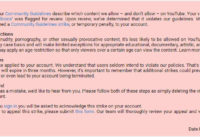External Post: The Short-Lived Normalization of Breastfeeding on Television
Hey all, Cleo here, verrrry slowly trying to catch up with the emails that accumulate while I’m going crazy raising my two young kids.
I wanted to share some snippets with you from this interesting article sent to me by a fan, titled “The Short-Lived Normalization of Breastfeeding on Television,” which you can read in its entirety here: https://hazlitt.net/feature/short-lived-normalization-breastfeeding-television
I’ll admit, it’s pretty crazy to imagine TV from a decade or more past featuring breastfeeding without it being treated as sexual fetish fodder and/or the butt of a joke. I tend to notice it in more modern media–plenty of scenes in shows specifically about parenting like The Let Down and Working Moms (both on Netflix), and on the real-life side of things, I was particularly struck by the n0-frills ease that the mom in the first episode of Tidying Up fed her toddlers (another topic for discussion: extended breastfeeding, e.g. beyond 2 years). But if the treatment of homosexual relationships in older media is anything to go by, the average TV audience, and certainly the TV execs trying to entice them, seem to be incapable of seeing breastfeeding as anything but something to be exploited as “shocking” or “hilarious.”
Anyway, on to the article:
“When Dakota Starblanket Wolfchild, nicknamed Cody, was born in 1976, Sainte-Marie woke up in the hospital next to a huge basket of formula company samples, but she didn’t want her kid to have them. She could barely entertain the thought of having to sterilize her infant’s bottle in the middle of the night. How arduous. Sainte-Marie only wanted to breastfeed him, even though breastfeeding was somewhat out of vogue at the time. “My OB–GYN had never received much training on breast feeding and couldn’t advise me,” she wrote to me recently. “Like most things in parenthood, breastfeeding was an acquired skill.”
Sounds about right! Personally I’m in the “fed is best” camp in that I won’t knock anyone for using formula, as long as the baby is getting adequate nutrients. However, I also dread the thought of the difficulty of dealing with formula, sterilizing bottles, etc–not that pumping is any easier–and I’m extremely thankful that I was able to work from home and thus feed my kids straight from the source, as it were.
And hospitals used to be much more pushy about selling formula. There are various reasons behind this, disinformation about the quality of formula vs breastmilk being a huge part of it, which you can thank (surprise, surprise) formula-making companies for pushing. So let’s not disregard Sainte-Marie’s bravery in wanting to go the breastfeeding route, despite the discouragement shoved her way even on day one!
“Sainte-Marie’s desire to breastfeed her child on television was deeply personal, and tied to her larger mission on Sesame Street. Her Cree family had lost two daughters in the days when churches had made breastfeeding illegal, forcing Indigenous women to drive miles in a horse-pulled buckboard to a farmer who sold them cow’s milk which could spoil before it got to the babies.”
One particularly harmful aspect of the worldwide push towards formula instead of breastmilk is that it hits especially hard in poor and difficult-to-access communities where formula is hard to come by. Beyond the difficulty of even obtaining formula in the first place, poor communities have a much harder time achieving adequate sterilization for bottles etc. to keep formula-fed babies safe from infection and parasites. So breastfeeding in public and on television–in a respectful, nonsexual manner–is important not only to encourage passersby and lawmakers to leave nursing mothers unharassed, but to show those affected by formula-driven disinformation that there is nothing wrong or shameful (or indeed painful or otherwise dangerous) in breastfeeding your children, as long as you are able to produce milk and they are able to latch on.
The scene, which appears midway through the 116th episode of season eight, unfolds with mundane calm. Big Bird was horribly jealous of Cody, and that had become a running gag during Sainte-Marie’s time on the show: KEEP OUT! a sign outside Big Bird’s nest read, referring to Cody. THAT MEANS YOU. But during this segment, merely 150 words and 56 seconds long, Big Bird softens. He comes upon Sainte-Marie breastfeeding her child. Big Bird is taken with this gesture he’d never seen, the sight of a kid huddled at his mother’s bosom, nibbling for nutrition and comfort.
This is, to me, really the ideal way to display breastfeeding in public media. Not to mock it, not to make it into a sexual fantasy–just to show the natural simplicity of it, and to communicate the gentle bonding between mother and child that breastfeeding can create (along with the many other benefits of breastfeeding!) It’s very fortunate that the Sesame Street executives were “keen” to allow this type of scene to be filmed, and very sad (but probably expected) that the public outcry over this simple scene was so disparaging and intense.
Anyway, it’s an interesting article, so you might want to read the whole thing for yourself! Link is above and here: https://hazlitt.net/feature/short-lived-normalization-breastfeeding-television
And thanks again to the follower who suggested it! If you have an article you think might be worth sharing, feel free to suggest it here: http://www.toplesstopics.org/contact/suggestions/
Also, if you’re interested in more of my tips and opinions on breastfeeding, I made this video some time ago that lists my “Top Ten Do’s and Don’t’s for Breastfeeding”: http://www.toplesstopics.org/breastfeeding/ I have lots more to say besides about breastfeeding that I hope to make future videos about, mayhap I can even encourage some other breastfeeding mothers, gynecologists, etc. to cohost videos with me and share their own opinions and knowledge on the subject!
Topless Topics Parenting: Breastfeeding Demonstration Top 5 Do’s and Don’t’s (short version) from Topless Topics on Vimeo.






